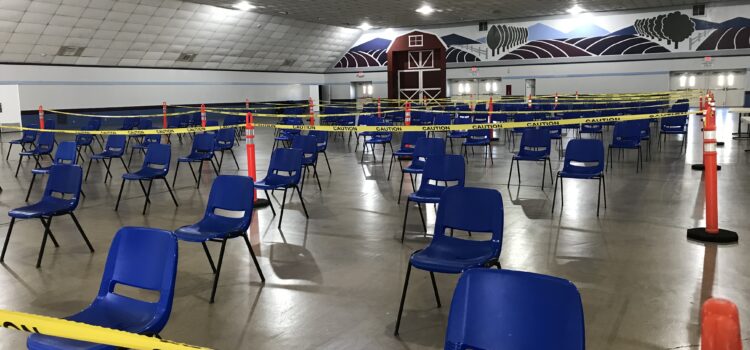
Last month, a CDC report measured the county’s vaccine rollouts with regards to “social vulnerability.” It examined COVID-19 doses distributed from December 14, 2020 through March 1 and ranked California 44th in vaccinating residents in the most vulnerable communities.
Communities at Risk
Governor Newsom has since announced that all counties set aside 40 percent of vaccine doses for the hardest-hit communities and established a vaccine equity metric. These communities include Latinos, Pacific islanders, Blacks, and those that have high socioeconomic risks.
For communities with a median income of less than 40K, the COVID-19 case rate is 37 percent higher than case rates statewide, according to the CDC. The CDC also reported, the death rate of Latinos is 22 percent higher than statewide when contracting COVID-19. For Black people, the death rate is 7 percent higher statewide.
Despite COVID-19 disproportionately affecting these communities, the CDC reports that approximately 22 percent of those in the lowest quartile, or in the lowest healthy community condition are fully vaccinated in California. Furthermore, only 3.2 percent of Blacks and 22.4 percent Latinos have received a dose of the COVID-19 vaccine.
Public health officials still are questioning how can they reach these individuals so that they can get vaccinated when they become eligible.
Vaccine Inequity
Dr. Kupiri Ackerman-Barger, a clinical professor at UC Davis, states the first step in the race to vaccinate California’s most vulnerable populations is to understand what health inequity is. Dr. Barger identifies the 4 main factors that affect access to healthcare to be: the ability to pay, the ability to physically get to locations that provide care, utility, and quality.
Dr. Barger states, the public relies on their most recent experiences in healthcare to make the decision to continue that care, so healthcare providers must strive for quality care before a crisis occurs. She expressed the importance of California continuing to make the vaccine to be free or little to no cost so that the public can be encouraged to get their vaccine.
Dr. Barger further explained vaccine inequity is created through vaccine and location disparity. In other words, how many vaccines are available and how many providers can give the vaccine. A lack of access is created if vaccines are not distributed to communities that need it. Due to a lack of trust, the choice to not access available care is also a contributor to this inequity.
Trust in Medical Providers
Establishing trust as medical providers is important in getting the public to trust the vaccine states, Dr. David T Cooke, a thoracic surgeon at UC Davis Health.
“I anticipated that there would be vaccine hesitancy and appropriate vaccine hesitancy based on historic interactions between black and brown communities in healthcare, as well as the current structural racism in healthcare.” Therefore, Dr. Cooke participated in the clinical trials of the Pfizer COVID-19 vaccine.
He further explained that he knew and worked with those that conducted the trial and trusted their ethics and commitment to their patients, thus he is able to build trust with his own patients through by the efficacy rate of the vaccines available. He also points out that if patients wanted to, they can go to the FDA website to find raw data from each vaccine trial to make a better educated decision to take the vaccine.
Dr. Zola Afua Mansa Chihombori Quao (MD), adds that for the medical community to best work and build trust with communities of color is to understand their patients’ concerns, educate themselves on potential issues that the public will have in regards to the vaccination, and to be a true resource to their patients.
She explains that offering support or providing information on resources available that patients can use is vital. In her experience, taking her mother to get her vaccine appointment took a village. Dr. Chihombori Quao recognizes others may not have the same support system so consistent physical outreach is important, like calling or going door to door to vulnerable communities and telling them about the COVID-19 hotline, locations near them that offer the vaccine, and who is eligible to get a vaccine.
California Outreach Efforts
In addition to the 40 percent vaccine allotment reserved for vulnerable populations, Dr. Anthony Iton (MD, JD, MPH), senior Vice President of Healthy Communities at the California Endowment states, “[In California,] 20 philothranpic foundations give grants to community-based organizations that have good relations to vulnerable populations.”
These populations include elders, the homeless, and non-english speakers. The CBOs have the ability to track and have designated codes to make appointments for those populations.
The U.S Response to COVID-19 Pandemic
Many believe that the U.S had a poor emergency response. Messages on masks and other approaches differed, there was a slow response at starting testing, and slow on vaccines rollout compared to other countries.
Dr. Barger stated, “We have forgotten sometimes what it means to look out for each other, to be community based, getting the vaccine, wearing the masks is not about the individual, it is about us as a community and its about us as a society.” She hopes that the future generation will look back and make sure they don’t make the same mistake and think to themselves, “Remember when we forget to do that, let’s make sure that we do that for the welfare of everybody.”
She adds that pandemics like COVID-19 may become a new normal, and it will be highly unlikely the world will see this again in a century. Instead, much sooner.
Dr. Cooke expresses a hopeful future response by acknowledging that the mRNA vaccines were not made from new technologies, but the work of many years. The vaccine was created within a year because, “We are capable,” stated Dr.Cooke. In comparison to the flu vaccine, the COVID-19 vaccines are much more effective with a range of 70-95% efficacy compared to 40-60% efficacy of the flu vaccine.